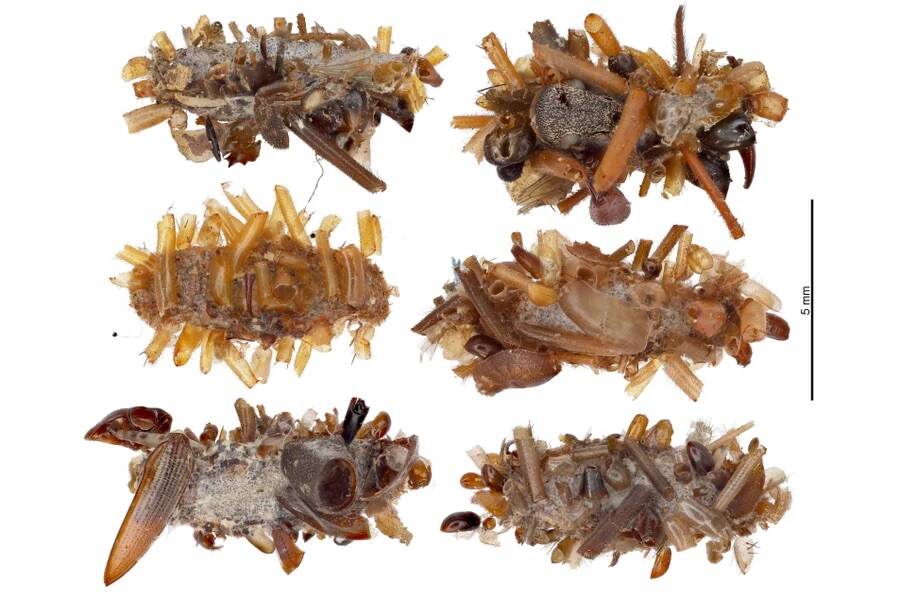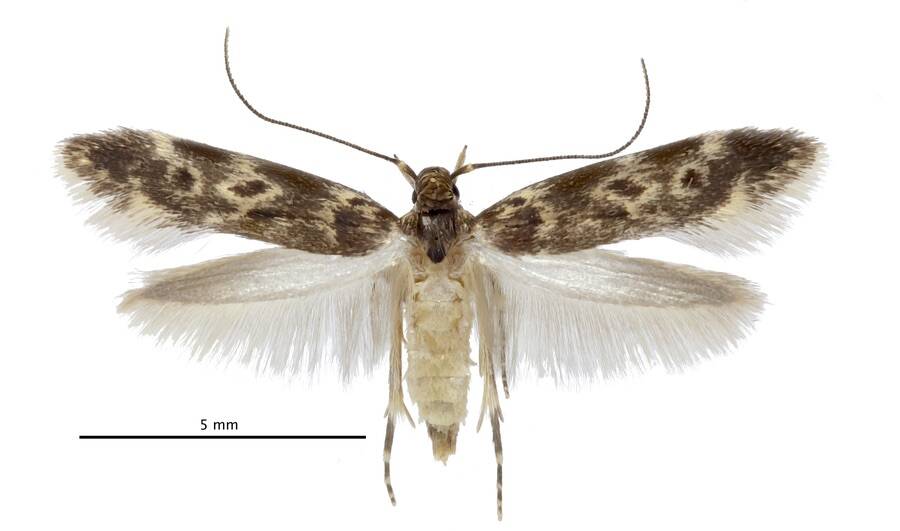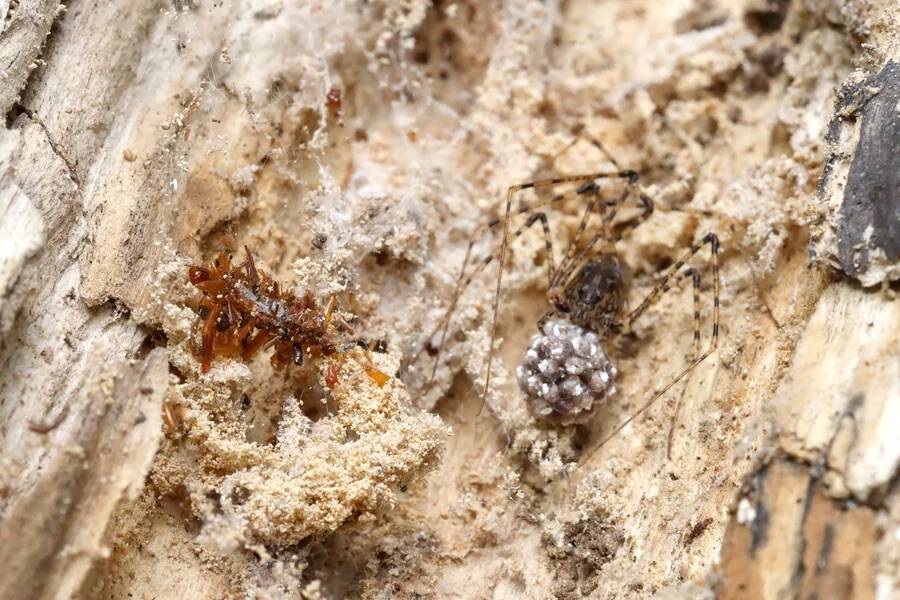This "bone collector" caterpillar is found only in a six-square-mile area on the Hawaiian island of Oahu.
Rubinoff Lab, Entomology Section, University of Hawaii at ManoaA video of the Hawaiian “bone collector” caterpillar shows how it creates its camouflage.
Caterpillars are remarkable creatures, but a particular species newly identified in the journal Science might just take the cake for strangeness.
Dubbed the “bone collector,” this caterpillar species scrounges the cadavers — and sometimes the live bodies — of insects from spider webs, carefully rotating them in an almost curated manner in order to wear their body parts as camouflage. The carnivorous caterpillar was found on the Hawaiian island of Oahu and is the first known species to engage in this odd behavior.
The Discovery Of The Bone Collector Caterpillar On Oahu

Rubinoff Lab, Entomology Section, University of Hawaii at ManoaAs far as researchers know, the bone collector is the only species of its lineage.
“I just couldn’t believe it. The first couple of times you find that, you think it’s got to be a one-off — it’s got to be a mistake,” study lead author Daniel Rubinoff told Scientific American. “I’ve been looking at it for over a decade and it still blows my mind.”
Scientists first observed the disguise-crafting caterpillars around 17 years ago, but as Rubinoff explained, the behavior seemed more like an anomaly than a trait specific to the species. However, since 2008, Rubinoff and his colleagues have observed 62 different bone collectors, all within a six-square-mile range.
According to the study published in Science, the caterpillars are only found on a specific mountain range on the island of Oahu, and they reside solely in spider webs. They’re part of the Hyposmocoma genus of moths that are native to Hawaii.
Like other Hyposmocoma caterpillars, the bone collector spends its larval stage in a protective silk case. However, while its cousins adorn themselves with sticks and shells for camouflage, the bone collector decorates its case with weevil heads, beetle abdomens, and molted spider exoskeletons.
Once Rubinoff and his fellow researchers realized that these macabre disguises were typical for bone collector caterpillars, they set out to determine why.
Why Bone Collectors Developed This Bizarre Habit

Rubinoff Lab, Entomology Section, University of Hawaii at ManoaAn adult “bone collector” moth.
Rubinoff believes this caterpillar species’ behavior is probably an evolutionary habit. Like other caterpillars, bone collectors eventually turn into moths, but these specific moths lay their eggs in trees or rock cavities enclosed by spider webs. When a caterpillar hatches, it needs to “camouflage itself from the spider landlord,” Rubinoff said.
He called it a “decorate or die situation,” as a normal protective layer “might not be enough to stop the spider from trying to puncture the case and eat the caterpillar.” Plus, if another bone collector were to try to inhabit the same nooks and crannies, they might wind up eating each other.
The spider web also provides another benefit for the caterpillars: food. Any leftovers from a spider’s meal — the soft tissue of a fly or the wing of a beetle, for instance — can sustain bone collectors. So, they’ll eat what they can of the dead bugs, use the remaining bits for a “shell,” and live gluttonously for a few months before sealing off that protective case and turning it into their cocoon.

Rubinoff Lab, Entomology Section, University of Hawaii at ManoaA bone collector in a spider web.
Rubinoff clarified, however, that the caterpillars aren’t considered parasites, nor do they have a symbiotic relationship with spiders. “That just gives you a sense of how they go after food — and recognize that there’s food inside things that maybe don’t look like food.”
Genetic analysis showed that the bone collector emerged around six million years ago, making it even older than the island it inhabits. This means that its genetic ancestor likely traveled to Oahu from a different island, but the bone collector is still the only known species in its lineage.
“I’m really glad we discovered it before it went extinct,” Rubinoff said.
After reading about the creepy bone collector caterpillar, discover seven other nightmarish insects. Then, learn about the giant waterbug’s incredibly painful bite.





